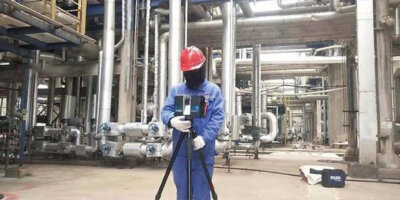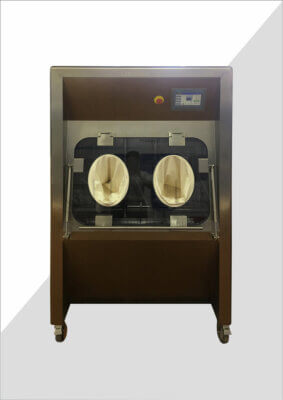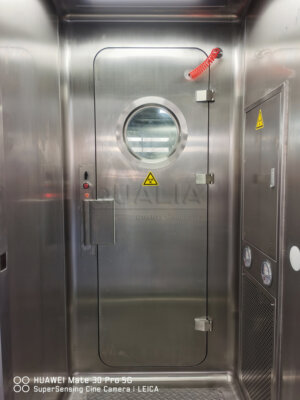In the realm of biosafety and laboratory management, one critical component often overlooked by the general public is the effluent decontamination system (EDS). These systems play a pivotal role in ensuring the safe handling and disposal of potentially hazardous biological waste, particularly in high-level biosafety laboratories (BSL). As research into dangerous pathogens continues to advance, the importance of reliable and efficient EDS becomes increasingly apparent.
The effluent decontamination system for biosafety level (BSL) facilities is a sophisticated network of equipment and processes designed to treat and neutralize liquid waste before it leaves the laboratory environment. These systems are crucial for preventing the release of potentially harmful biological agents into the public sewage system or the environment. From thermal treatment methods to chemical decontamination processes, EDS technologies have evolved to meet the stringent safety requirements of modern biocontainment facilities.
As we delve deeper into the world of effluent decontamination systems for BSL facilities, we'll explore the various types of systems available, their operational principles, and the regulatory framework that governs their use. We'll also examine the challenges faced in maintaining these systems and the latest innovations in the field. Understanding these systems is not just a matter of scientific interest; it's a critical aspect of public health and safety in an era where biological research is more important than ever.
Effluent decontamination systems are an essential safeguard in high-containment laboratories, ensuring that no potentially infectious materials are released into the environment.
Types of Effluent Decontamination Systems
| System Type | Treatment Method | Suitable BSL | Key Advantage |
|---|---|---|---|
| Thermal | Heat | 3, 4 | High efficacy |
| Chemical | Disinfectants | 2, 3 | Cost-effective |
| Thermochemical | Heat + Chemicals | 3, 4 | Versatile |
| Continuous Flow | Constant Processing | 3, 4 | High capacity |
| Batch | Intermittent Processing | 2, 3 | Space-efficient |
What are the primary types of effluent decontamination systems used in BSL facilities?
Effluent decontamination systems come in various forms, each designed to meet specific biosafety requirements. The primary types include thermal, chemical, and thermochemical systems, with each offering unique advantages for different laboratory settings.
Thermal systems use high temperatures to inactivate biological agents, while chemical systems rely on disinfectants to neutralize pathogens. Thermochemical systems combine both heat and chemical treatments for enhanced efficacy.
According to industry experts, thermal decontamination systems are considered the gold standard for BSL-3 and BSL-4 facilities due to their high reliability and effectiveness against a wide range of pathogens.
| System Type | Temperature Range | Processing Time | Energy Consumption |
|---|---|---|---|
| Thermal | 121-134°C | 30-60 minutes | High |
| Chemical | Ambient | Variable | Low |
| Thermochemical | 60-80°C | 15-30 minutes | Medium |
How does a thermal effluent decontamination system operate?
Thermal effluent decontamination systems operate on the principle of using high temperatures to destroy biological contaminants. These systems typically heat the liquid waste to temperatures between 121°C and 134°C, effectively sterilizing the effluent.
The process begins with the collection of liquid waste in a holding tank. From there, the effluent is pumped into a heat exchanger where it's rapidly brought to the target temperature. The heated effluent is then held at this temperature for a predetermined time to ensure complete decontamination.
QUALIA thermal effluent decontamination systems can achieve a 6-log reduction in microbial load, ensuring the highest level of biosafety for laboratory waste disposal.
| Process Stage | Temperature | Duration | Purpose |
|---|---|---|---|
| Pre-heating | 60-80°C | 5-10 min | Initial pathogen reduction |
| Sterilization | 121-134°C | 15-30 min | Complete decontamination |
| Cooling | 60-40°C | 10-15 min | Safe discharge preparation |
What are the regulatory requirements for effluent decontamination in BSL-3 and BSL-4 facilities?
Regulatory requirements for effluent decontamination in high-containment laboratories are stringent and comprehensive. These regulations are designed to ensure that no potentially infectious materials escape the controlled environment of the laboratory.
For BSL-3 and BSL-4 facilities, effluent decontamination systems must be validated to achieve a minimum of a 6-log reduction in microbial load. This means that 99.9999% of microorganisms must be inactivated before the effluent can be safely discharged.
The Centers for Disease Control and Prevention (CDC) mandates that all BSL-3 and BSL-4 facilities must have a fully functional and regularly validated effluent decontamination system in place.
| Regulatory Body | Requirement | Validation Frequency |
|---|---|---|
| CDC | 6-log reduction | Annually |
| WHO | Thermal or chemical treatment | Bi-annually |
| NIH | Continuous monitoring | Quarterly |
How do continuous flow systems differ from batch processing in effluent decontamination?
Continuous flow and batch processing represent two distinct approaches to effluent decontamination in biosafety laboratories. Each system has its own set of advantages and is suited to different operational needs.
Continuous flow systems process effluent constantly, allowing for a steady stream of waste to be treated without interruption. This makes them ideal for facilities with high volumes of liquid waste. Batch processing, on the other hand, treats discrete volumes of effluent in cycles, which can be more energy-efficient for facilities with intermittent waste generation.
Studies have shown that continuous flow systems can handle up to 50% more volume than batch systems of similar size, making them the preferred choice for large research institutions and pharmaceutical facilities.
| System Type | Processing Capacity | Energy Efficiency | Space Requirement |
|---|---|---|---|
| Continuous Flow | High (>1000L/day) | Moderate | Large |
| Batch | Moderate (<500L/day) | High | Compact |
What role do chemical treatments play in effluent decontamination for BSL facilities?
Chemical treatments play a crucial role in effluent decontamination, especially in facilities where thermal systems may not be practical or for specific types of biological agents that are particularly susceptible to chemical inactivation.
These systems typically use strong oxidizers such as chlorine dioxide, peracetic acid, or hydrogen peroxide to destroy pathogens. The effectiveness of chemical treatments depends on factors such as concentration, contact time, and the specific microorganisms present in the effluent.
Recent advancements in chemical treatment systems have led to the development of environmentally friendly oxidizers that are equally effective as traditional chemicals but with reduced ecological impact.
| Chemical Agent | Effective Concentration | Contact Time | Target Pathogens |
|---|---|---|---|
| Chlorine Dioxide | 50-200 ppm | 10-30 min | Broad spectrum |
| Peracetic Acid | 0.2-0.35% | 5-15 min | Bacteria, viruses |
| Hydrogen Peroxide | 2-6% | 20-60 min | Spores, prions |
How are effluent decontamination systems validated and maintained?
Validation and maintenance of effluent decontamination systems are critical to ensuring their continued effectiveness and compliance with regulatory standards. These processes involve regular testing, monitoring, and servicing of the system components.
Validation typically includes biological indicators to verify the system's ability to achieve the required log reduction in microbial load. Maintenance involves regular inspections, replacement of worn parts, and calibration of sensors and control systems.
Annual validation of effluent decontamination systems is not just a regulatory requirement but a critical step in preventing potential biosafety breaches, according to leading biosafety experts.
| Validation Method | Frequency | Parameters Tested | Acceptance Criteria |
|---|---|---|---|
| Biological Indicators | Quarterly | Microbial inactivation | 6-log reduction |
| Chemical Indicators | Monthly | Temperature, pressure | Within ±2% of setpoint |
| Physical Measurements | Weekly | Flow rate, pH | As per system specifications |
What are the latest innovations in effluent decontamination technology for biosafety laboratories?
The field of effluent decontamination is continuously evolving, with new technologies emerging to enhance efficiency, safety, and environmental sustainability. Recent innovations focus on improving energy efficiency, reducing chemical usage, and implementing advanced monitoring systems.
One notable advancement is the development of smart EDS systems that use artificial intelligence to optimize treatment parameters based on real-time effluent composition analysis. Another innovation is the integration of membrane filtration technologies with traditional decontamination methods for enhanced pathogen removal.
The integration of IoT (Internet of Things) technology in effluent decontamination systems has led to a 30% increase in operational efficiency and a significant reduction in maintenance downtime.
| Innovation | Key Benefit | Implementation Challenge |
|---|---|---|
| AI-driven optimization | Increased efficiency | High initial cost |
| Membrane filtration | Enhanced pathogen removal | Regular membrane replacement |
| IoT integration | Real-time monitoring | Cybersecurity concerns |
In conclusion, effluent decontamination systems are a critical component of biosafety infrastructure in high-containment laboratories. From thermal and chemical treatments to advanced continuous flow systems, these technologies ensure that potentially hazardous biological waste is safely neutralized before being released into the environment. The stringent regulatory requirements and ongoing innovations in the field underscore the importance of EDS in maintaining public health and safety.
As research in high-risk biological agents continues to advance, the role of effluent decontamination systems will only grow in importance. The continuous development of more efficient, sustainable, and reliable EDS technologies is essential to support the critical work being done in BSL-3 and BSL-4 facilities worldwide. By ensuring the safe handling and disposal of laboratory waste, these systems play a vital role in protecting both researchers and the general public from potential biological hazards.
The future of effluent decontamination looks promising, with smart systems, sustainable technologies, and enhanced monitoring capabilities on the horizon. As we move forward, the integration of these advanced systems with existing laboratory infrastructure will be crucial in maintaining the highest standards of biosafety and supporting groundbreaking research in the life sciences.
External Resources
Effluent Decontamination System – Treatment of Bio Contaminants – This resource provides an overview of Effluent Decontamination Systems (EDS), including their legal requirements for biosafety level 3 and 4 facilities, the methods used (thermal, batch, and continuous flow), and the components and disadvantages of these systems.
BioWaste Effluent Decontamination Systems – This page from Suncombe details their BioWaste Effluent Decontamination Systems, which are designed for biosafety levels 1 to 4. It covers the different types of systems (thermal, thermochemical, chemical), their configurations, and the emphasis on total containment and compliance with regulations.
EDS – Effluent Decontamination Systems – Burt Process Equipment's page on EDS systems explains the various types of effluent decontamination systems, including high-temperature continuous batch, thermochemical, and chemical systems. It highlights the suitability of these systems for different biosafety levels and facility needs.
Effluent Decontamination systems – This document from the Belgian Biosafety Server discusses the regulatory framework and technical aspects of effluent decontamination systems, particularly for high containment facilities. It covers the methods, validation, and biosafety aspects of these systems.
Effluent Decontamination Systems (EDS): Annual Verification and General Maintenance – This resource from the Select Agents Program provides guidelines for the annual verification and maintenance of Effluent Decontamination Systems, including the common methods of decontamination (heat and chemical treatment) and the importance of biological validation.
Effluent Decontamination Systems for Biocontainment Facilities – This article from Lab Manager discusses the critical role of effluent decontamination systems in biocontainment facilities, focusing on the technologies and best practices to ensure effective and safe decontamination.
- Biosafety and Biosecurity: Effluent Decontamination – The CDC's Biosafety in Microbiological and Biomedical Laboratories (BMBL) guide includes a section on effluent decontamination, outlining the principles and practices for decontaminating biohazardous waste in various biosafety levels.
Related Contents:
- Continuous Effluent Decontamination: Protecting Our Environment
- Effluent Decontamination: Safeguarding Our Environment
- Decontamination Systems: Safeguarding Health and Environment
- Water Decontamination: Essential Methods for Clean, Safe Water
- Maintaining a Clean Effluent Filter: Essential Steps
- Decontamination Cleaning: Ensuring Safety Through Thorough Sanitization
- Effluent Decontamination Systems (EDS) by QUALIA: Protecting Public Health and the Environment
- QUALIA’s BSL-3/BSL-4 Module Laboratories: Enhancing Biocontainment
- Top Features of BSL-3/BSL-4 Module Laboratories by QUALIA





























